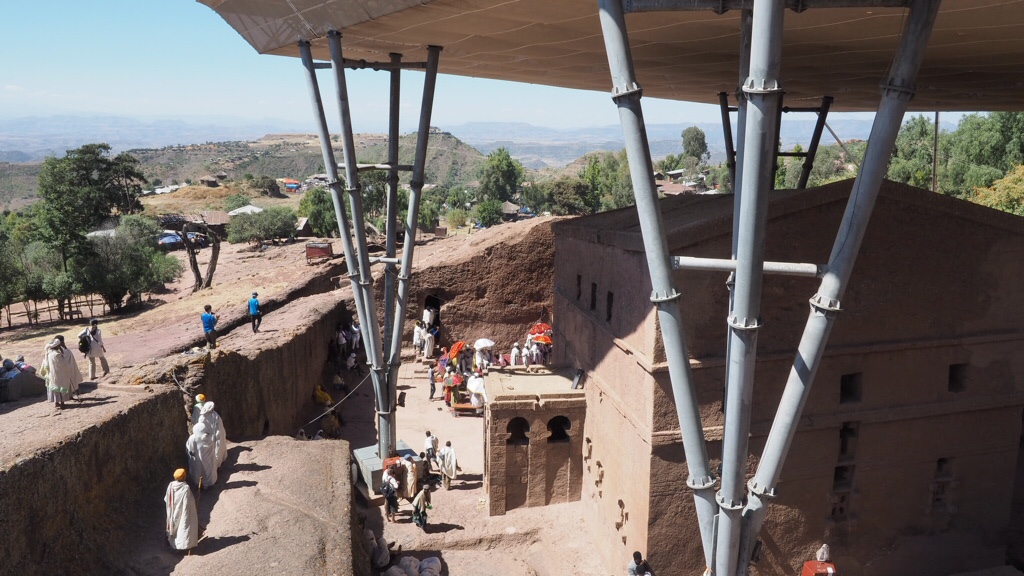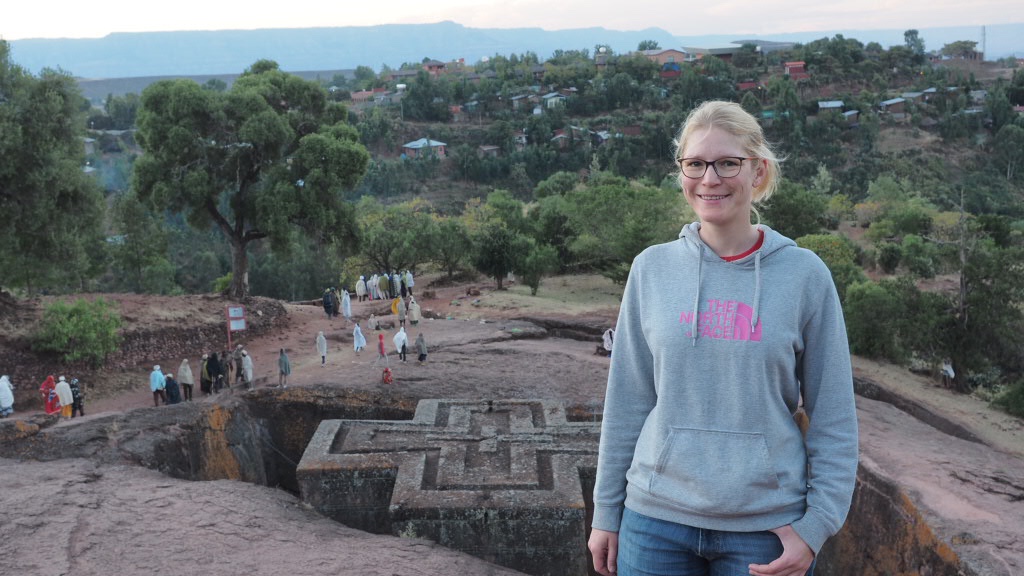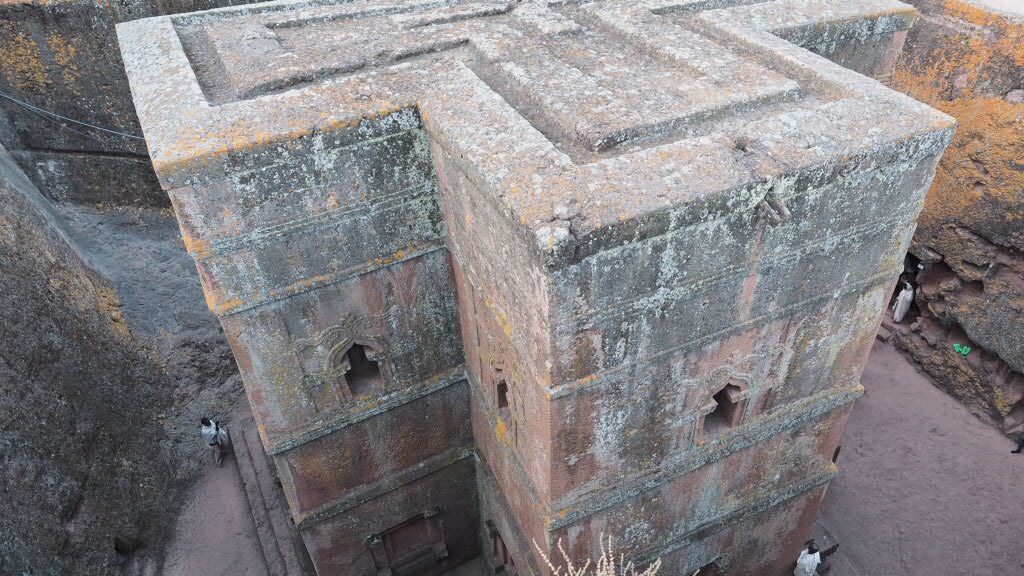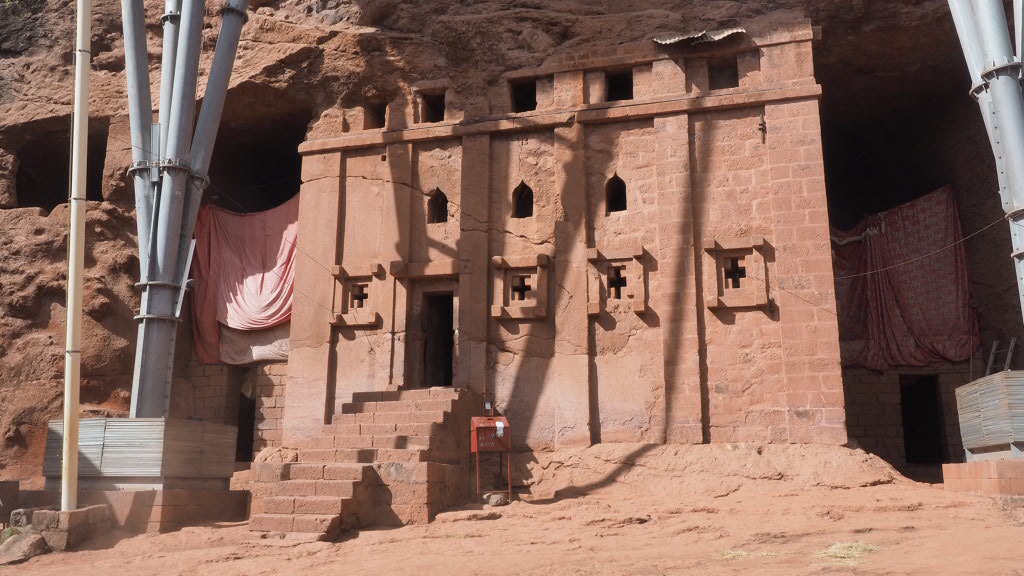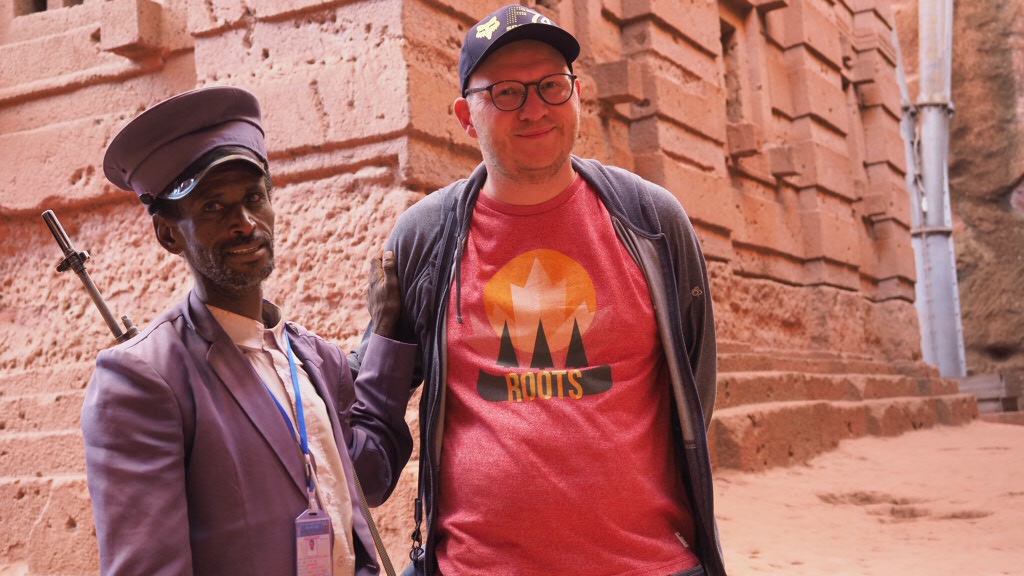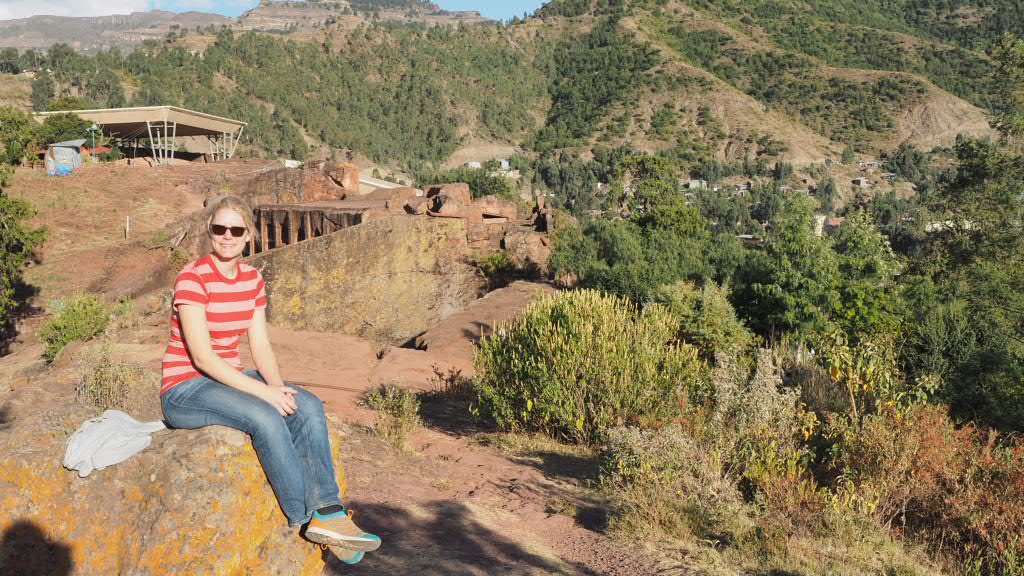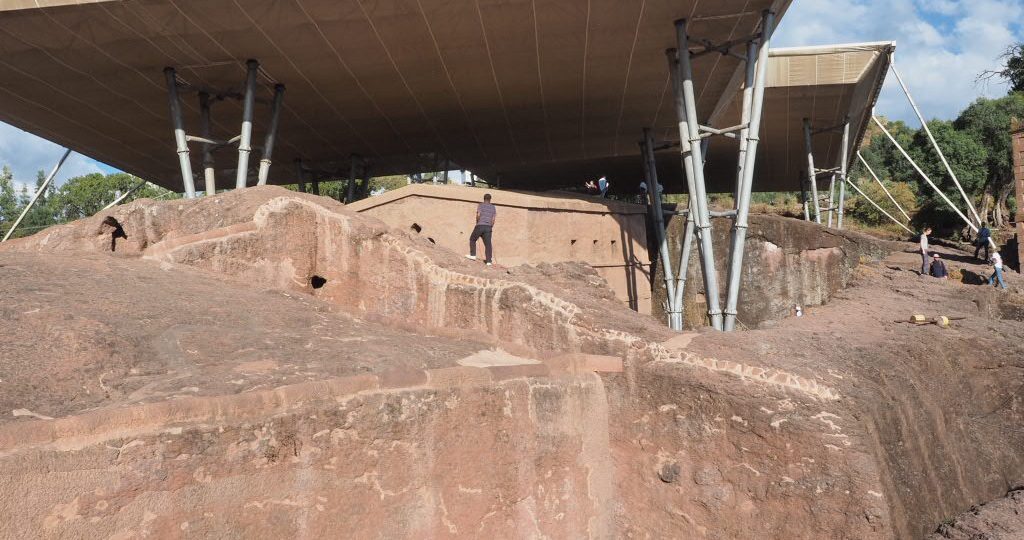We had planned to stay in Lalibela for three nights but with the Orthodox Christmas coming closer the hotels had already significantly increased the room rates. We therefore decided to cut our stay by one night. Having arrived in the morning this left us still with two full days to explore the churches. All non-Ethiopians have to pay the enormous price of 50 US$ to see all this. While I do thinks it’s a sight not to be missed and support that it’s free to Ethiopians, who mostly come for religious purposes, it’s quite the asking price and did hurt…
The churches are remarkable in that they are not build above ground but carved into the ground. After the outer walls were excavated the inside was hollowed out. This was done for several churches, them being connected above ground with access through trenches or underground through tunnels. There is two clusters of churches to explore. Within each there are two or three larger, completely excavated churches and many more smaller carved into the rock, rather like a cave. With Christmas being so close there were a lot of pilgrims around. Many of them poor, they set up camp on the fields outside the church complexes. We walked through these camps and it had very much the feeling of a music festival. Kind of crowded, chaotic with garbage on the ground. People sitting on the ground around a fire, cooking, or lying in their tent, which is mostly just a tarp providing protection from the sun. A striking difference was probably the goats and chickens wandering around. The pilgrims were mostly dressed in white or at least carrying a white cloth to wrap themselves into. Many of them came to the churches in the morning, when a mass was held. We were deeply impressed by the sheer number of pilgrims and their religious devotion. Even for us, as not religious people, this atmosphere of spirituality and the faith felt pure and honest. We could observe a mass held outside of one the churches in the surrounding trench with chanting, bells and drums. It was hypnotizing. Having compared the monastery at Bahir Dar with those in Tibet, I have to say, the churches here absolutely compare. In my personal ranking I place the churches of Lalibela in one category with Machu Picchu and the temple and Potala in Lhasa.
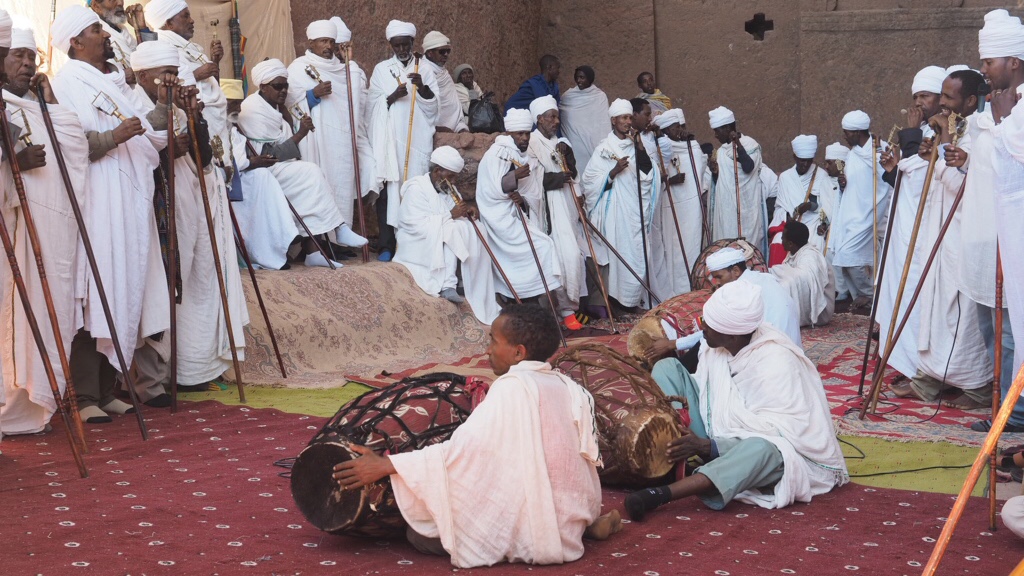
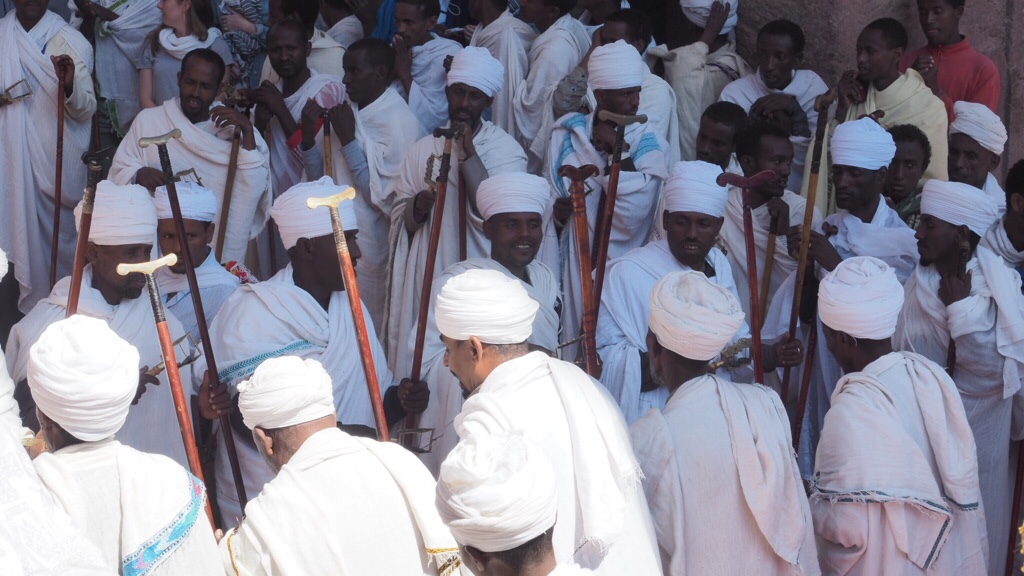
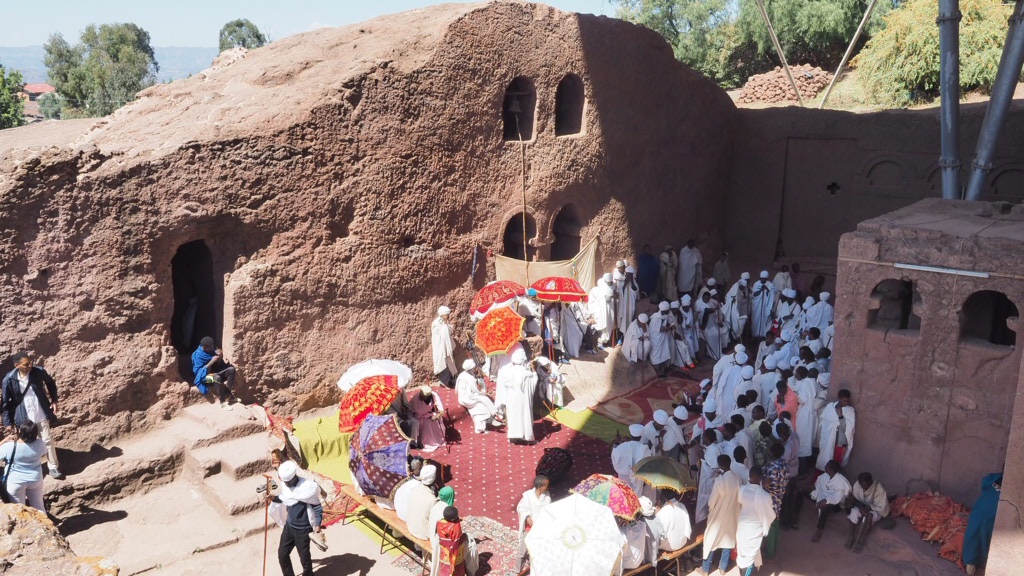
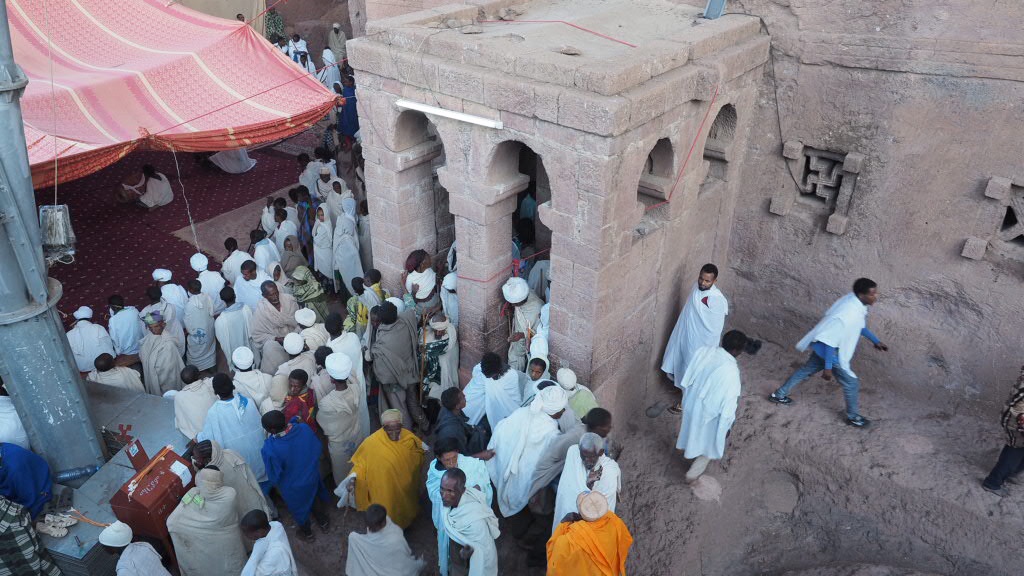
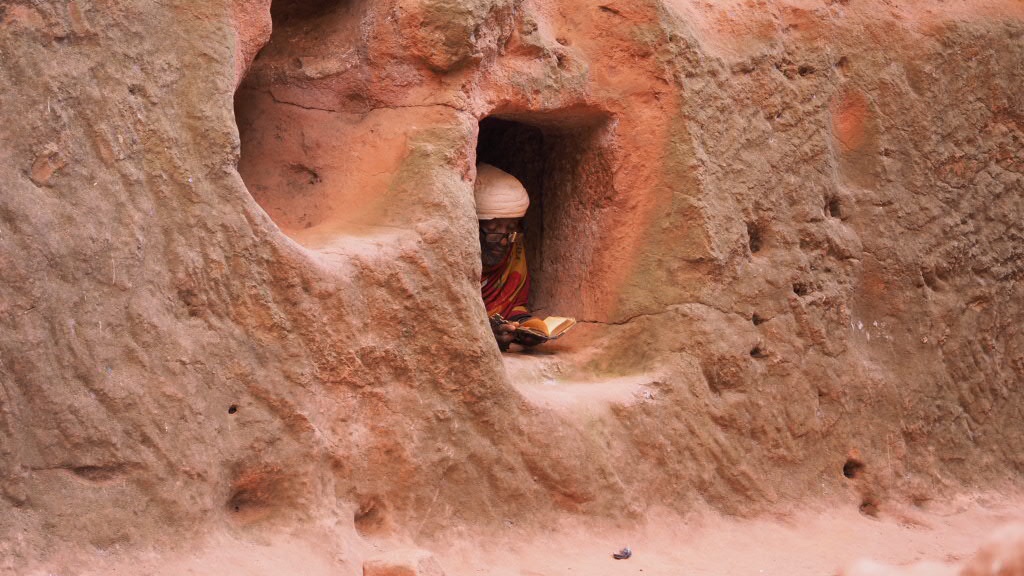
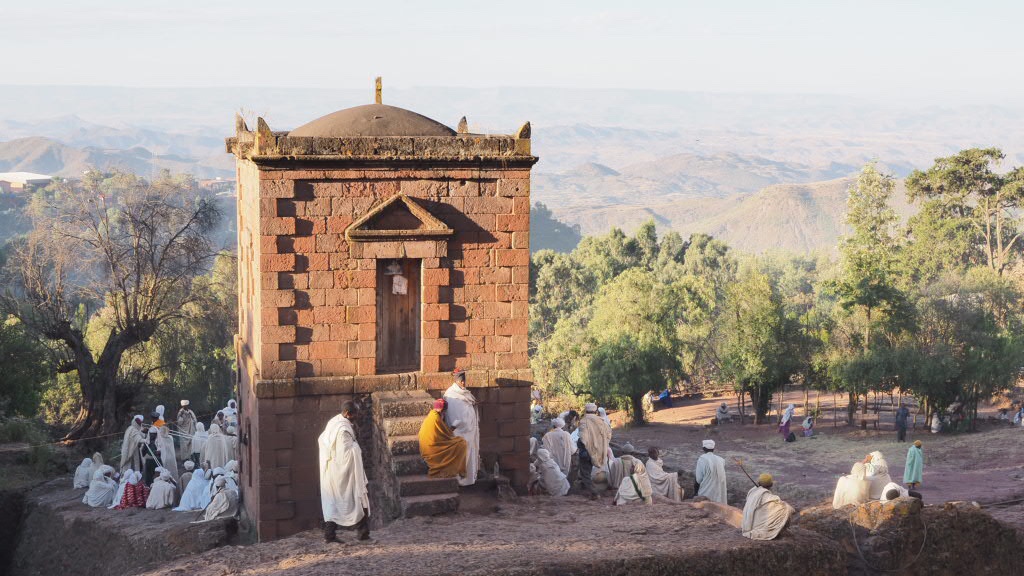
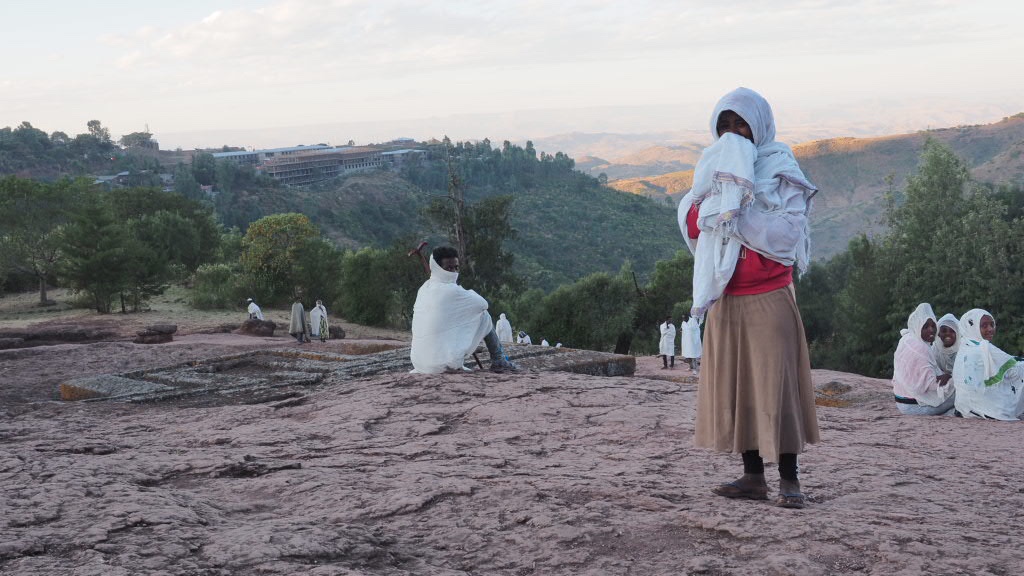
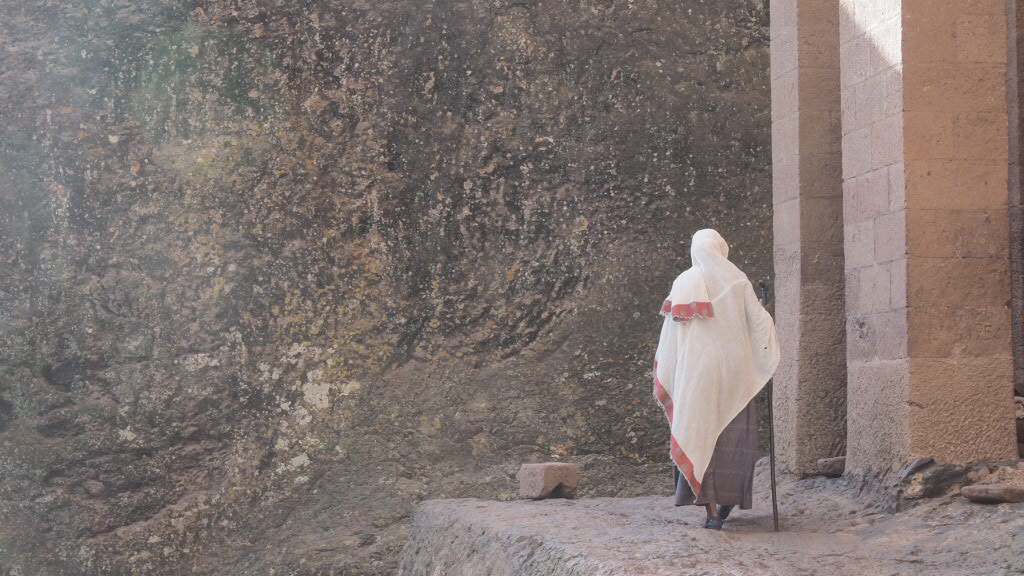
The base of the churches is up to 15 m below the ground. Following the shape of the roof and the surrounding ground you can still make out the original surface. Most of the churches are covered by a roof to protect them from the weather. There are many stories about how the buildings were made ranging from a rather religious legend that they were made in one day to the theory that they originate from pagan temples and were excavated over decades.
The town of Lalibela has a rather rural flair to it despite hosting the main tourist attraction. All the streets are dirt roads or cobblestone and the road to the airport as well as all other roads out of Lalibela are bumpy gravel roads. Here we also experienced our first power outage. And the second. Sitting in the dark with our cellphones lying on our beer glasses to have a makeshift lamp we realized that we need to bring our headlights if we plan to be out after sunset.
